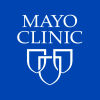预约演示
更新于:2025-05-07
Prostate Cancer, Hereditary, 7
遗传性前列腺癌7型
更新于:2025-05-07
基本信息
别名 HPC7、PROSTATE CANCER AGGRESSIVENESS、PROSTATE CANCER, HEREDITARY, 7 + [3] |
简介- |
关联
14
项与 遗传性前列腺癌7型 相关的药物靶点 |
作用机制 AR拮抗剂 |
在研机构 |
原研机构 |
非在研适应症 |
最高研发阶段批准上市 |
首次获批国家/地区 中国 |
首次获批日期2022-06-28 |
靶点 |
作用机制 PSMA抑制剂 |
在研机构 |
在研适应症 |
最高研发阶段批准上市 |
首次获批国家/地区 美国 |
首次获批日期2020-12-01 |
靶点 |
作用机制 PD-1抑制剂 |
最高研发阶段批准上市 |
首次获批国家/地区 美国 |
首次获批日期2018-09-28 |
52
项与 遗传性前列腺癌7型 相关的临床试验NCT06662708
Accurate Prediction and Treatment of Prostate Cancer by Artificial Intelligence Model-based Whole Slide Images and MRIs
The aim of this clinical trial is whether artificial intelligence models can be used for accurate clinical preoperative diagnosis and postoperative diagnosis of pathological findings, and will also measure the accuracy of the predictions made by the artificial intelligence models.The main target questions addressed by the model building are:
1. whether the AI model can learn from preoperative MRI and postoperative Whole Slide Images so as to accurately predict information such as benignness or malignancy, aggressiveness, grading, subtypes, genes, etc. for participants suspected of having prostate cancer preoperatively/puncturally.
2. whether the AI model is capable of learning postoperative macropathology slides to enable outcome diagnosis of surgical pathology slides in new participants.
Participants will:
1. complete an MRI examination and have their MRI images analysed by the established AI model to make an accurate diagnosis of them.
2. Based on the diagnosis, if prostate cancer is predicted, they will undergo radical prostate cancer surgery and refine their surgical pathology.
1. whether the AI model can learn from preoperative MRI and postoperative Whole Slide Images so as to accurately predict information such as benignness or malignancy, aggressiveness, grading, subtypes, genes, etc. for participants suspected of having prostate cancer preoperatively/puncturally.
2. whether the AI model is capable of learning postoperative macropathology slides to enable outcome diagnosis of surgical pathology slides in new participants.
Participants will:
1. complete an MRI examination and have their MRI images analysed by the established AI model to make an accurate diagnosis of them.
2. Based on the diagnosis, if prostate cancer is predicted, they will undergo radical prostate cancer surgery and refine their surgical pathology.
开始日期2024-12-01 |
申办/合作机构 南京医科大学第一附属医院 [+1] |
NCT06262139
An Open-label Evaluation of a Targeted Magnetic Resonance Imaging Contrast Agent (MT218) in Prostate Cancer Patients
This phase 1b open label, dose-escalating investigation study is to evaluate the dose dependent initial efficacy of the use of MT218 injection for biomarker targeted MR molecular imaging (MRMI) of prostate cancer in patients scheduled for radical prostatectomy.
开始日期2024-07-25 |
申办/合作机构 |
NCT05320406
Mechanism and Predictors of Cardiotoxicity After Prostate Cancer Treatment: a Parallel Cohort and Randomized Trial Comparing Radiation Alone, Radiation Plus Leuprolide, and Radiation Plus Relugolix
This phase IV clinical trial investigates the impact of prostate cancer treatment, specifically androgen deprivation therapy (ADT), on the heart and coronary vessels among men with localized, non-metastatic prostate cancer undergoing definitive radiation therapy and concomitant ADT. Recently, cardiovascular toxicity from hormone therapy that is routinely used for prostate cancer (e.g. leuprolide) has emerged as a concern, yet studies identifying who is at risk and the mechanism of cardiac damage are lacking. Additionally, a new hormone therapy drug, relugolix, has recently been Food and Drug Administration (FDA)-approved and may reduce toxicity to the heart. This trial intends to investigate the mechanism of cardiovascular toxicity from ADT, investigate the mechanism by which relugolix reduces cardiovascular toxicity, and identify predictive biomarkers to improve individualized risk-assessment for cardiovascular toxicity from ADT.
开始日期2022-06-06 |
申办/合作机构  Emory University Emory University [+2] |
100 项与 遗传性前列腺癌7型 相关的临床结果
登录后查看更多信息
100 项与 遗传性前列腺癌7型 相关的转化医学
登录后查看更多信息
0 项与 遗传性前列腺癌7型 相关的专利(医药)
登录后查看更多信息
870
项与 遗传性前列腺癌7型 相关的文献(医药)2025-04-07·Oncogene
Mitochondrial unfolded protein response-dependent β-catenin signaling promotes neuroendocrine prostate cancer
Article
作者: Chaudhary, Ajay K ; Yadav, Neelu ; Kumar, Rahul ; Donnelly, Cullan ; Wang, Jianmin ; Wojtulski, Adam ; Bross, Peter ; Bethu, Murali ; Spernyak, Joseph ; Woytash, Jordan Alyse ; Chandra, Dhyan ; Inigo, Joseph R
2025-04-01·Annals of Oncology
Decaffeinated coffee consumption and risk of total and site-specific cancer
Article
作者: Ma, C ; Zhao, L ; Giovannucci, E L ; Zhang, Y ; Mucci, L A
2025-04-01·Nature Reviews Urology
Plant-based diets and urological health
Review
作者: Borin, James F. ; Loeb, Stacy ; Cole, Alexander P. ; Gupta, Natasha ; Narasimman, Manish ; Cole, Alexander P ; Amin, Katherine ; Venigalla, Greeshma ; Borin, James F
73
项与 遗传性前列腺癌7型 相关的新闻(医药)2025-04-23
The first patient was enrolled this month in a Nanostics-sponsored clinical utility study in Calgary to quantify the impact of incorporating ClarityDX Prostate into the standard of care for the early detection of prostate cancer.
The randomized two-arm control study will recruit up to 1,074 men referred to two urology centres in Alberta.
EDMONTON, AB, April 23, 2025 /PRNewswire/ - Nanostics Inc., a precision health company developing diagnostic tests with its ClarityDX® platform technology, has met a major milestone with the recruitment of the first patient into its recently launched clinical utility study (NCT06678828). The study will quantify the clinical and economic impact of incorporating ClarityDX Prostate into the standard of care for prostate cancer screening.
The Nanostics-sponsored study will recruit 1,074 patients from two Alberta Urology sites, with Dr. Eric Hyndman serving as the principal investigator at the Prostate Cancer Centre in Calgary and Dr. Adam Kinnaird serving as the principal investigator at the Kipnes Urology Centre in Edmonton.
ClarityDX Prostate was previously validated in a 3448-patient study that showed using ClarityDX Prostate as an adjunctive test after an elevated PSA result could more accurately identify men with aggressive prostate cancer sooner, leading to better outcomes while also minimizing the negative effects associated with overdiagnosis of the disease.
"We're excited to announce the first patient recruited in our ClarityDX Prostate clinical utility study," said John Lewis, CEO, Nanostics. "The study is designed to further support the use of ClarityDX Prostate as an additional tool for prostate cancer screening and support the wide-scale adoption of the test."
"If the results of the ClarityDX Prostate validation study hold true for this clinical utility study, a 47% reduction in unnecessary biopsies would be transformative for prostate cancer screening, both for the patient and the healthcare system," said Dr. John Dushinski, Chief Medical Officer for the Prostate Cancer Centre.
Prostate cancer affects one in six Alberta men, is the second leading cause of cancer death in men in North America, and 1 in 44 will die from it. Some prostate cancers grow slowly and are low risk, while others are aggressive and grow quickly. This disease often progresses with little to no symptoms, which makes early detection a critical component of screening because, when caught early, prostate cancer can often be treated successfully.
Including ClarityDX Prostate into the clinical care pathway for men with elevated PSA levels aligns with the Canadian Urological Association (CUA) recommendation to use adjunctive strategies to better stratify the risk of aggressive prostate cancer. North American and European urology associations also recommend that men with elevated PSA levels use adjunctive tests to better inform their decision to biopsy.
About Prostate Cancer Centre
Founded in 1999, the Prostate Cancer Centre (PCC) is a leading charitable organization committed to the early detection and treatment of prostate cancer, the advancement of men's health, and groundbreaking research in prostate and other urological diseases. Based at the Rockyview General Hospital in Calgary, the PCC provides comprehensive, personalized support to men and their families—before, during, and after treatment. Through community outreach, expert consultations, diagnostic services, education on treatment options, and access to cutting-edge research, the Centre remains a trusted resource for those affected by prostate cancer.
About Kipnes Urology Centre
The Dianne and Irving Kipnes Urology Centre (KUC) provides a state-of-the-art, single point of access to ambulatory urological services in Edmonton, Alberta. The KUC has both academic and clinical interests and is home to the only Urology Residency Training Program in Alberta. At KUC, patients are provided comprehensive care for prostate health and prostate cancer, including diagnosis, treatment, and research services to all men within Northern Alberta.
About Nanostics Inc.
Nanostics Inc. is a private Canadian company that develops and commercializes novel and noninvasive diagnostic tests. Its core technology, ClarityDX®, uses advanced machine learning algorithms to create a disease risk score that predicts the presence of diseases. ClarityDX is applicable to a wide range of cancers and other diseases. Nanostics' lead product, ClarityDX Prostate®, is a test that improves the accuracy of detecting clinically significant prostate cancer. Read more at . Follow Nanostics on LinkedIn, YouTube, Facebook, and Instagram.
SOURCE Nanostics
WANT YOUR COMPANY'S NEWS FEATURED ON PRNEWSWIRE.COM?
440k+
Newsrooms &
Influencers
9k+
Digital Media
Outlets
270k+
Journalists
Opted In
GET STARTED
临床研究
2025-04-09
A spit test, where a sample can be collected at home, is more accurate at identifying future risk of prostate cancer for some men than the current standard PSA blood test, a new study reports.
Results of the BARCODE 1 study, which have been published in the New England Journal of Medicine, calculated the risk of prostate cancer from DNA extracted from saliva – called a polygenic risk score. For the men with the highest risk score, the study found this to be a better tool than the blood test which measures levels of a protein called prostate-specific antigen (PSA), which can be elevated if someone has prostate cancer.
The current PSA test is used to identify men who are at higher risk of prostate cancer – due to their age or ethnicity – and men presenting with symptoms. Men with a high PSA result will be sent for further tests to detect cancer.
The PSA test falsely indicates prostate cancer in men three out of four times and detects cancers which grow so slowly they are unlikely to ever be life-threatening – meaning that men may undergo unnecessary MRI scans, invasive biopsies, and treatments.
Researchers at The Institute of Cancer Research, London, and The Royal Marsden NHS Foundation Trust trialled their new DNA test which looks for genetic variants linked to prostate cancer.
For the men with the highest genetic risk, the test falsely identified fewer people with prostate cancer than the PSA test, picked up people with cancer who would have been missed by the PSA test alone, and picked up a higher proportion of the aggressive cancers than the PSA test. The test also accurately identified men with prostate cancer that was missed by an MRI scan.
The research received funding from the European Research Council, the Bob Willis Fund, Cancer Research UK, The Peacock Trust and the National Institute for Health and Care Research (NIHR) Biomedical Research Centre (BRC) at The Royal Marsden and The Institute of Cancer Research (ICR).
The study calculated the polygenic risk score (PRS) of 6,142 European men recruited from their GP surgeries, aged 55-69 – an age at which risk of prostate cancer is increased. The score is based on 130 genetic variations in the DNA code that are linked to prostate cancer, and it was developed by studying the DNA of hundreds of thousands of men.
The men with the highest 10 per cent of risk scores – who have inherited many of these variants and are most at risk of developing the disease – were invited to further screening.
Following an MRI and prostate biopsy, 187 (40 per cent) of the 468 men with a high PRS were diagnosed with prostate cancer. This compares with the PSA test, in which 25 per cent of men with a high PSA level will actually have prostate cancer.
Of these 187 men, 118 (63.1 per cent) had a PSA level below 3.0ug/L, which is considered ‘normal’ and would usually indicate that no further screening is required.
Previous studies have shown that the PSA blood test picks up many people who have cancers that are not of concern and would not require treatment. The PRS saliva test identified a higher proportion of aggressive cancers – which are fast growing and likely to spread – than the PSA test. Of the 187 cancers detected, 55.1 per cent were aggressive cancers compared with 35.5 per cent identified by a PSA test, in a recent study.
The PRS test is also more accurate than an MRI scan for these men with high genetic risk, as 125 men (66.8 per cent) had prostate cancer confirmed by a biopsy that was not detected by the MRI.
As the PSA test is often inaccurate, the PRS saliva test could offer an additional screening tool to be offered to men at higher risk of prostate cancer, or those presenting with symptoms. Future research will follow-up the men with high PRS scores to monitor if they go on to develop prostate cancer.
Since the BARCODE 1 study began, an international research team has identified more risk variants for men of Asian and African ancestry, and the ICR team have developed an updated version of the test, called PRODICT®, which can be used in this population. They have launched a new study using PRODICT®, which includes more genetic variants that indicate cancer than the original test.
The £42million TRANSFORM trial launched by the charity Prostate Cancer UK, which is being partly led by the team at the ICR, will directly compare the saliva test to the PSA blood test and MRI scan, to assess whether those with a low genetic risk may benefit from an alternative screening tool.
The research team estimates that the spit test could identify up to 12,350 people earlier, saving the NHS around £500 million a year.
Professor Ros Eeles, Professor of Oncogenetics at The Institute of Cancer Research, London, and Consultant in Clinical Oncology and Cancer Genetics at The Royal Marsden NHS Foundation Trust, said:
“With this test, it could be possible to turn the tide on prostate cancer. We have shown that a relatively simple, inexpensive spit test to identify men of European heritage at higher risk due to their genetic makeup is an effective tool to catch prostate cancer early. Building on decades of research into the genetic markers of prostate cancer, our study shows that the theory does work in practice – we can identify men at risk of aggressive cancers who need further tests and spare the men who are at lower risk from unnecessary treatments.
“We’re now excited to be rolling out our updated test, PRODICT®, to diverse populations – as Black men are twice as likely to develop prostate cancer – and younger groups, as those with a genetic predisposition are more likely to be diagnosed at younger ages.
“We are also currently comparing the saliva test to other potential screening options, as part of the TRANSFORM trial, to assess the most cost-effective and accurate way to screen men for prostate cancer.”
Professor Kristian Helin, Chief Executive of The Institute of Cancer Research, London, said:
"Early detection of cancers significantly increases the chance of a cure. With prostate cancer cases expected to double by 2040, it's crucial to establish a robust way of picking up clinically significant cases of prostate cancer at an earlier stage. The current PSA test often leads to unnecessary treatments and, more concerningly, fails to detect some cancers. There is an urgent need for a better screening test. This research represents a promising advancement towards that goal and underscores the life-saving potential of genetic testing."
Katie Willis, daughter of Bob Willis, former England Cricket Captain who died from prostate cancer, and co-founder of The Bob Willis Fund, said:
"The Bob Willis Fund has proudly supported this important work for the past three years. The potential of genetics to significantly improve early diagnosis of prostate cancer in men is huge. Although the PSA test is effective for some, it did not work for Dad. If this research can save even one life, establishing the Fund would have been a worthwhile endeavour for our family. We commend Professor Eeles and her team at the ICR for their outstanding efforts and look forward to our continued partnership together.”
Naser Turabi, Director of Evidence and Implementation at Cancer Research UK, said:
“Prostate cancer is the second biggest cancer killer of men in the UK, taking around 12,000 lives a year. Right now, there’s no reliable method to detect aggressive prostate cancer, but this study brings us a step closer to finding the disease sooner in those people who need treatment.
“It’s encouraging to see that genetic testing might help to guide a more targeted approach to screening based on someone’s risk of developing prostate cancer. More research is now needed to confirm if this tool can save lives from the disease so that it can be rolled out to improve diagnosis.”
CASE STUDY – ‘Because of this study, two lives have been saved in my family’
Dheeresh Turnbull, 71, from Brighton, was diagnosed with prostate cancer through the BARCODE 1 study four years ago, after receiving an unexpected letter through the door from his local GP inviting men over 60 to take part in the research trial.
He said: “Once I agreed to go onto the trial, I underwent some tests. When my results came back, I was sent a letter to say I was in the top genetic risk category, and I was referred to The Royal Marsden. Further tests revealed that I had prostate cancer, and I was told that a relatively low PSA score can still be harbouring a life-threatening tumour if the person falls in a certain genetic group. I have no family history of prostate cancer, so I was completely shocked. I would never have been diagnosed at this stage if I hadn’t joined the trial.
"Because the saliva test revealed that I had a high genetic risk of developing the disease, my younger brother, who would have been too young to join the study directly, signed up and discovered that he also had an aggressive tumour in the prostate. It’s incredible to think that because of this study two lives have now been saved in my family.”
临床结果
2025-02-04
TUESDAY, Feb. 4, 2025 -- It’s tough for a man to know what to do following a diagnosis of
prostate cancer
.
The treatment is often worse than the risk posed by the cancer itself, causing some men to suffer incontinence and impotence even though their tumor wouldn’t have killed them.
It’s sometimes better -- but unnerving -- to simply live with the cancer and keep it under observation.
Now, a new genetics-driven urine test can help clear up that confusion by helping identify aggressive prostate cancers that are more likely to lead to a man’s early death, a new study says.
What’s more, the test sample can be taken at home and sent in for analysis, researchers say.
The test, called MyProstateScore 2.0 (MPS2), looks at 18 genes linked to aggressive prostate cancers.
The urine test detected 94% of aggressive prostate cancers, a rate more sensitive than that of PSA blood tests, researchers recently reported in
The
Journal of Urology
.
“Its primary benefit is that the test can accurately predict your probability of developing aggressive prostate cancer, putting both the patient and physician at ease,” co-researcher
Dr. Ganesh Palapattu
, chair of urology at the University of Michigan, said in a news release.
The current gold-standard test for prostate cancer is the prostate-specific antigen (PSA) test, which looks in blood for a protein released by an inflamed prostate.
However, fewer than 25% of men with an elevated PSA have a type of prostate cancer that needs immediate treatment, according to
Lynx Dx
, manufacturer of the urine test.
Previous studies had shown that the MyProstateScore 2.0 test could effectively judge the severity of prostate cancer, but those results had occurred after a rectal exam, researchers said.
A rectal exam squishes the prostate, making it more likely that DNA debris from a tumor would wind up in the patient’s urine sample.
The new results show that the urine test could be taken at home and sent in, given that it will be as accurate even without a rectal exam.
In fact, Lynx Dx announced Monday following the study’s publication that they will make MyProstateScore 2.0 available for at-home collection sampling.
The urine test “now empowers patients to collect their samples in the comfort of their homes, a significant step forward in prostate cancer risk assessment and our commitment to patient-centered care,” Dr. Spencer Heaton, chief medical officer at Lynx Dx, said in a
news release
.
For the study, researchers ran the test using urine from 266 men who had not undergone a rectal exam.
The results also showed that using the test would have avoided up to 53% of unnecessary prostate biopsies, researchers said.
Researchers plan to study the test’s ability to judge low-risk prostate cancers in men.
The test “could potentially improve the health of our patients by avoiding overdiagnosis and overtreatment and allowing us to focus on those who are most likely to have aggressive cancers,” Palapattu said.
Whatever your topic of interest,
subscribe to our newsletters
to get the best of Drugs.com in your inbox.
临床结果
分析
对领域进行一次全面的分析。
登录
或

生物医药百科问答
全新生物医药AI Agent 覆盖科研全链路,让突破性发现快人一步
立即开始免费试用!
智慧芽新药情报库是智慧芽专为生命科学人士构建的基于AI的创新药情报平台,助您全方位提升您的研发与决策效率。
立即开始数据试用!
智慧芽新药库数据也通过智慧芽数据服务平台,以API或者数据包形式对外开放,助您更加充分利用智慧芽新药情报信息。
生物序列数据库
生物药研发创新
免费使用
化学结构数据库
小分子化药研发创新
免费使用




